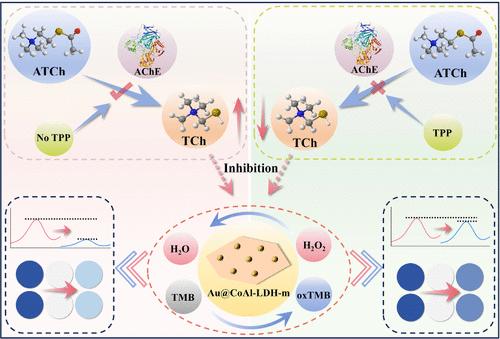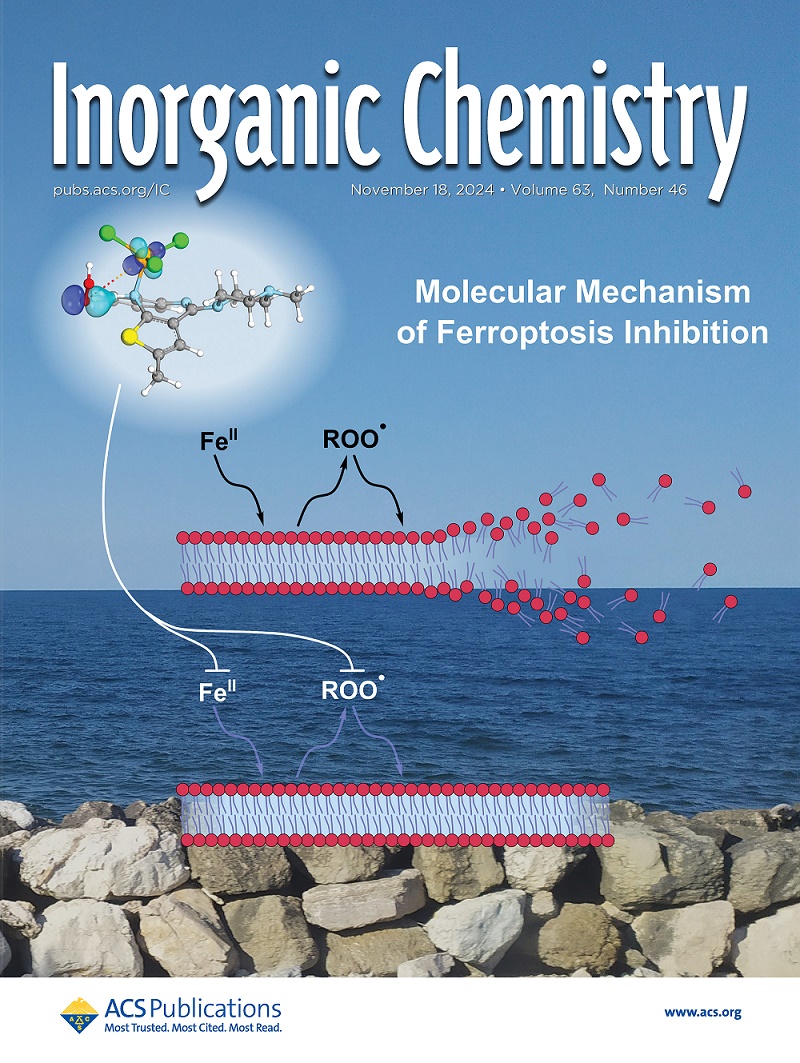Gold Nanoparticles Decorated CoAl LDH Monolayer: A Peroxidase-Like Nanozyme for Sensitive Colorimetric Detection of Acetylcholinesterase and Inhibitors
IF 4.7
2区 化学
Q1 CHEMISTRY, INORGANIC & NUCLEAR
引用次数: 0
Abstract
Monitoring acetylcholinesterase (AChE) activity and its inhibitor is crucial yet challenging for the early diagnosis and treatment of neurological diseases. In this study, we present Au nanoparticle decorated CoAl layered double hydroxide monolayer (Au@CoAl-LDH-m) as a peroxidase-like (POD) nanozyme for the sensitive colorimetric detection of AChE and its inhibitor, thiamine pyrophosphate (TPP). Remarkably, the Au@CoAl-LDH-m nanozyme can catalyze the oxidation of chromogenic substrates through its POD-like activity, which is effectively inhibited by thiocholine (TCh, a catalytic product of AChE), thereby enabling detection of AChE and TPP through a visible colorimetric readout. The approach provides a highly sensitive and specificity assay with a broader linear response range (1–100 mU mL–1 for AChE and 1–1000 ng mL–1 for TPP) and a low detection limit (0.092 mU mL–1 for AChE and 0.201 ng mL–1 for TPP), respectively. These results highlight the significant potential of Au@CoAl-LDH-m for advancing colorimetric sensors in detecting small molecules across various biological applications.

金纳米颗粒修饰煤LDH单层:一种用于乙酰胆碱酯酶及其抑制剂敏感比色检测的过氧化物酶样纳米酶
监测乙酰胆碱酯酶(AChE)活性及其抑制剂对神经系统疾病的早期诊断和治疗至关重要,但也具有挑战性。在这项研究中,我们提出了金纳米粒子修饰的煤层双氢氧化物单层(Au@CoAl-LDH-m)作为过氧化物酶(POD)纳米酶,用于AChE及其抑制剂焦磷酸硫胺(TPP)的灵敏比色检测。值得注意的是,Au@CoAl-LDH-m纳米酶可以通过其pod样活性催化显色底物的氧化,这种活性被硫胆碱(TCh, AChE的催化产物)有效抑制,从而可以通过可见比色法检测AChE和TPP。该方法具有较高的灵敏度和特异性,具有较宽的线性响应范围(AChE为1-100 mU mL-1, TPP为1-1000 ng mL-1)和较低的检出限(AChE为0.092 mU mL-1, TPP为0.201 ng mL-1)。这些结果突出了Au@CoAl-LDH-m在推进比色传感器在各种生物应用中检测小分子方面的巨大潜力。
本文章由计算机程序翻译,如有差异,请以英文原文为准。
求助全文
约1分钟内获得全文
求助全文
来源期刊

Inorganic Chemistry
化学-无机化学与核化学
CiteScore
7.60
自引率
13.00%
发文量
1960
审稿时长
1.9 months
期刊介绍:
Inorganic Chemistry publishes fundamental studies in all phases of inorganic chemistry. Coverage includes experimental and theoretical reports on quantitative studies of structure and thermodynamics, kinetics, mechanisms of inorganic reactions, bioinorganic chemistry, and relevant aspects of organometallic chemistry, solid-state phenomena, and chemical bonding theory. Emphasis is placed on the synthesis, structure, thermodynamics, reactivity, spectroscopy, and bonding properties of significant new and known compounds.
 求助内容:
求助内容: 应助结果提醒方式:
应助结果提醒方式:


